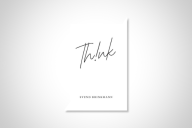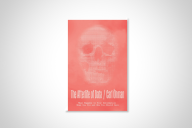You have /5 articles left.
Sign up for a free account or log in.
The documentary Enlighten Us: The Rise and Fall of James Arthur Ray, shown at film festivals last year and broadcast on CNN a couple of months ago, is now available from Netflix, where it is certain to reach a much wider audience than Svend Brinkmann’s Stand Firm: Resisting the Self-Improvement Craze, a new book from Polity. But they came to my attention within a few days of each other and now seem linked. Let’s start with the film.
James Arthur Ray was at one point regarded as a rising star in the world of self-transformation, giving lectures and workshops on how to escape emotional pain, reach your full potential and so forth. Self-transformation is a crowded field and a competitive market. The pool of potential customers is constantly replenished (the human condition disappoints a new batch daily) but so are the ranks of self-help authors, life coaches and other varieties of freelance sage. Until about 10 years ago Ray had only a middling success. Then he came to the attention of Oprah Winfrey and was asked to appear on her program to discuss the life-changing wisdom of a book and film called The Secret, which teaches the importance of thinking positive thoughts while also taking care to avoid thinking negative thoughts. I’m not clear if there is more to it than that, but it seems the universe is compelled to turn those thoughts into reality, somehow.
Ray seems to have had a telegenic and plausible manner and was invited back by Winfrey, at which point the universe started coming across for him in a big way. He filled auditoriums and wrote a book that reached the New York Times best-seller list. Clients were willing to pay thousands of dollars for Ray’s weeklong marathons of intensive paradigm shifting. One of the more demanding features of these retreats was a sweat lodge. Attendees packed themselves into a restricted, tentlike space for long periods, breathing steam until it felt like their lungs were on fire. Ray’s claim to be following a Native American spiritual practice ought to have been viewed with skepticism: shamans do not traditionally get paid per head.
The obvious potential for disaster was finally realized in late 2009, when three sweat-lodge participants died and 18 more ended up in the hospital. Ray was convicted of negligent homicide and spent two years in prison.
Enlighten Us tells this story while following Ray after his release from prison, as he seeks -- against very long odds -- to re-establish himself professionally. It may sound appalling that he even tries. But the documentarians are quite effective in letting him rationalize his effort to stage a comeback, trying to convert his prison experience into a teachable lesson in the power of positive thinking. The cringe factor comes in large part from the gradual revelation that Ray is not really malevolent, just incredibly obtuse -- shallow all the way down, the power of positive thoughts inuring him to any sense of guilt or responsibility for a needless loss of life. As far as James Arthur Ray is concerned, the three deaths were a learning experience, at least for him.
The sweat-lodge calamity must not have made the news in Denmark, where Svend Brinkmann is a professor of general psychology and qualitative methods at the University of Aalborg. Otherwise he surely would have mentioned it as a cautionary tale in Stand Firm, first published in Danish in 2014. James Arthur Ray embodies the very cultural trend that Brinkmann wants to resist:
The buzz all around us is about development, change, transformation, innovation, learning and other dynamic concepts that infuse the accelerating culture …. The upshot of this is that most of us are easy marks for all sorts of guidance, therapy, coaching, mindfulness, positive psychology and general self-development. In spheres like diet, health and exercise, a veritable religion has emerged that constantly churns out new edicts to follow and regimes to live by.
The mention of an “accelerating culture” driving the self-transformation craze comes from Brinkmann’s use of the social theory of Zygmunt Bauman, who died in England in January. I wrote about Bauman’s work in this column a while back and will forgo trying to boil it down any further now. Suffice to say that for Brinkmann, we are under pressure to be flexible, adaptable and affirmative toward the constantly changing and unpredictable demands that Bauman analyzed under the heading of “liquid modernity.”
You go with its flow, or else. “If you can’t stand the pace,” Brinkmann writes, “… the prescribed remedies are coaching, stress management, mindfulness and positive thinking.” And that’s just the short list: the coping technologies are just as subject to flux as anything else in liquid modernity. Brinkmann is not content to identify trends and complain about them, however, and recommends something even older than sweat lodges as well as considerably safer: the doctrines and practices of the Stoic philosophers.
Where positive visualization is preached nowadays (think of all the things you want to achieve!), the Stoics recommend negative visualization (what would happen if you lost what you have?). Where you are now encouraged to think in terms of constant opportunities, the Stoics recommend that you acknowledge and rejoice in your limitations. Where you are now expected to give free rein to your feelings at all times, the Stoics recommend that you learn self-discipline and sometimes suppress your feelings. Where death is now considered taboo, the Stoics recommend contemplating your own mortality on a daily basis, in order to nurture gratitude for the life you are living.
With tongue in cheek, he presents a seven-point plan for how to stop changing yourself and just get on with life. Despite the parodic gesture, Brinkmann is perfectly serious about trying systematically to undermine grandiose expectations regarding the self’s mutability, efficacy and entitlement. There is a dignity that comes with acknowledging limits; that is Brinkmann’s point in brief.
While reading Stand Firm, I thought of interviews with some of James Arthur Ray’s adherents in the documentary. They recalled how they discovered him while “ready to reach the next level in life” or to “go beyond everything that’s been holding me back.” They all seemed to have reached a fairly comfortable position in life (enough so to spend up to $10,000 in search of whatever wisdom they thought Ray had to teach) and it was hard to tell what they hoped to transform themselves into, exactly. Brinkmann’s book would seem to suggest they might not know that themselves, but some of them died, pointlessly, trying.








